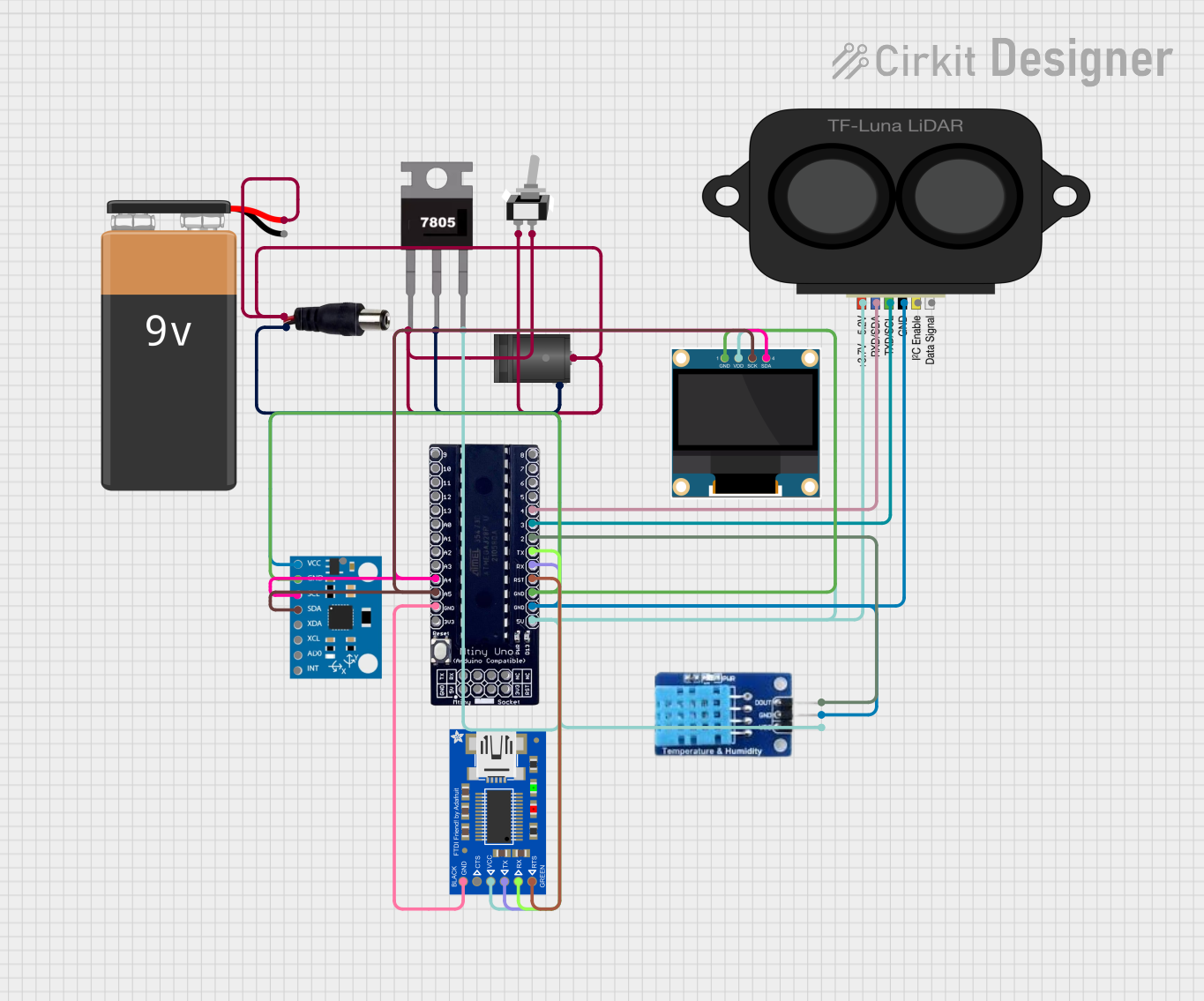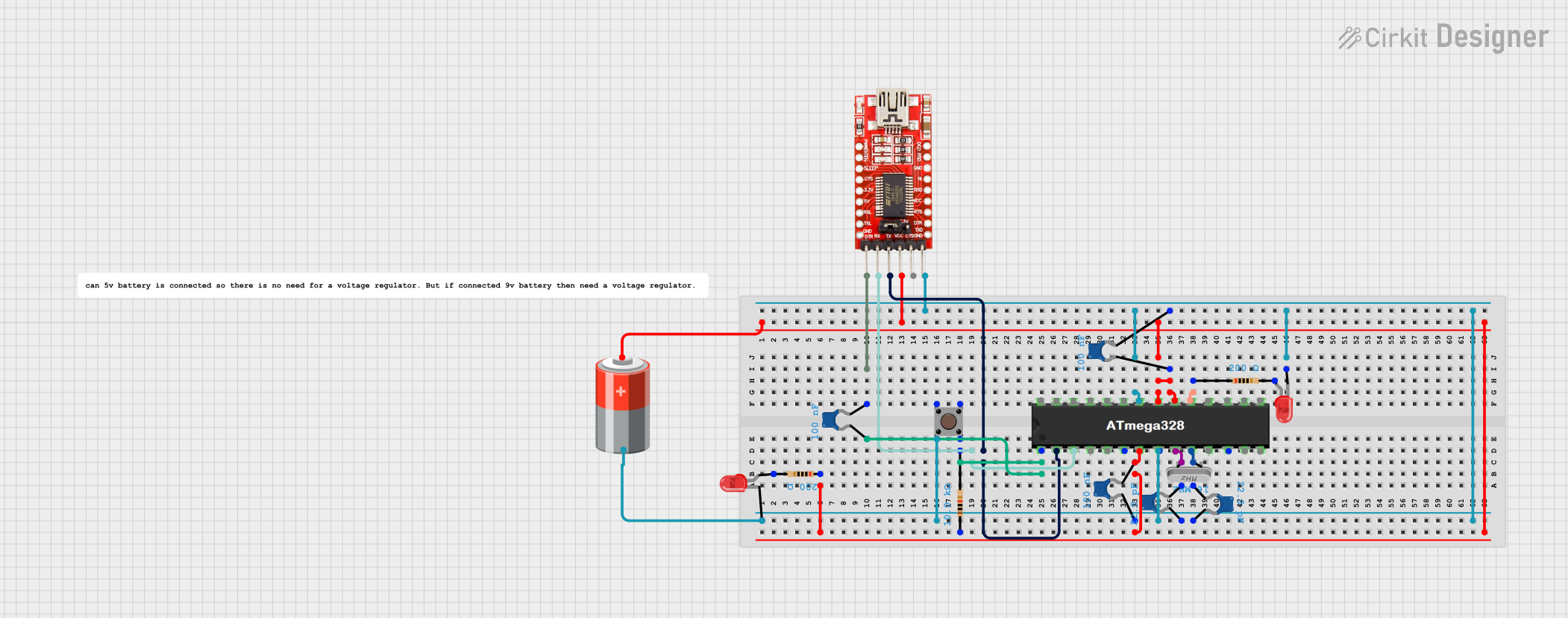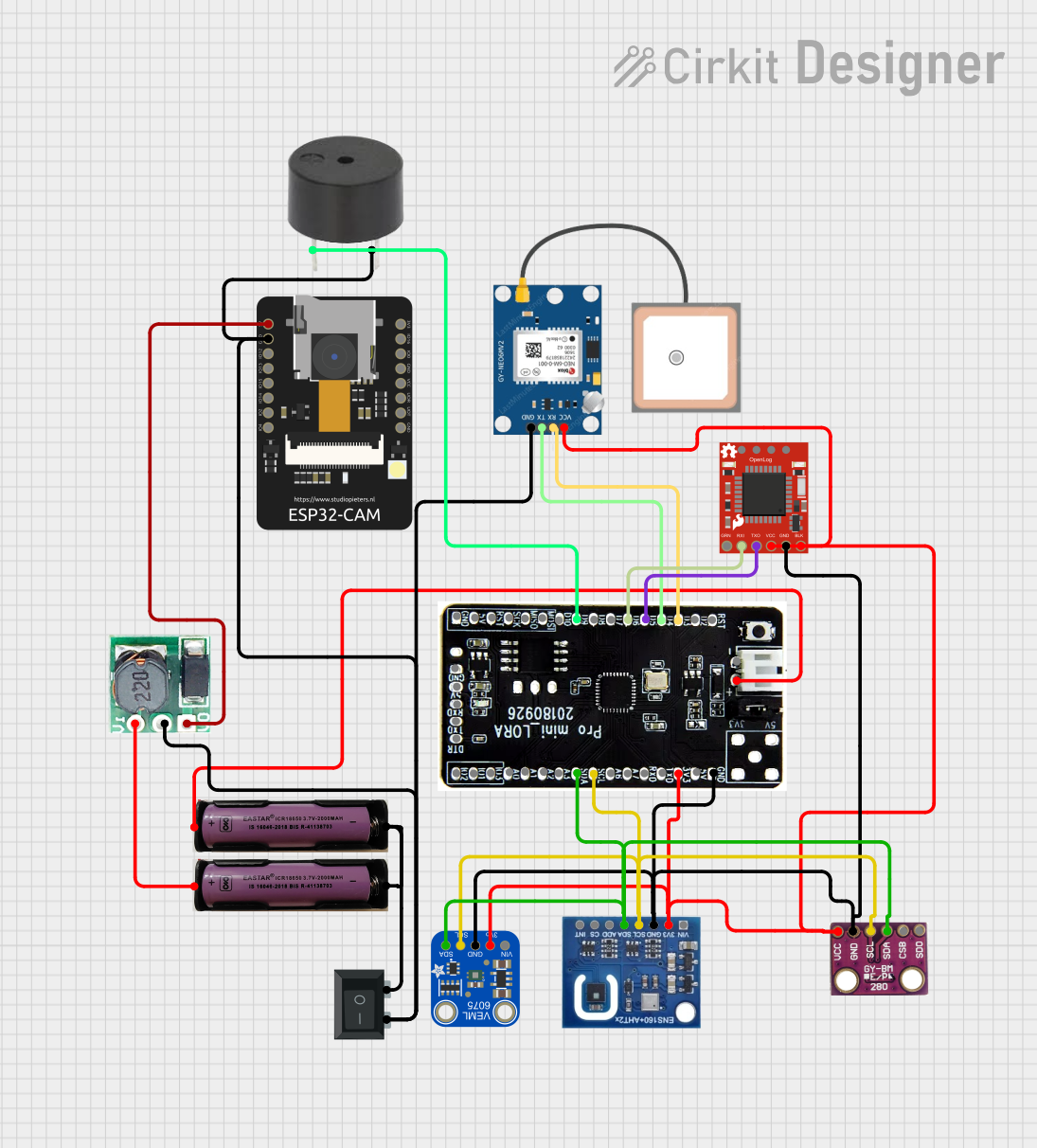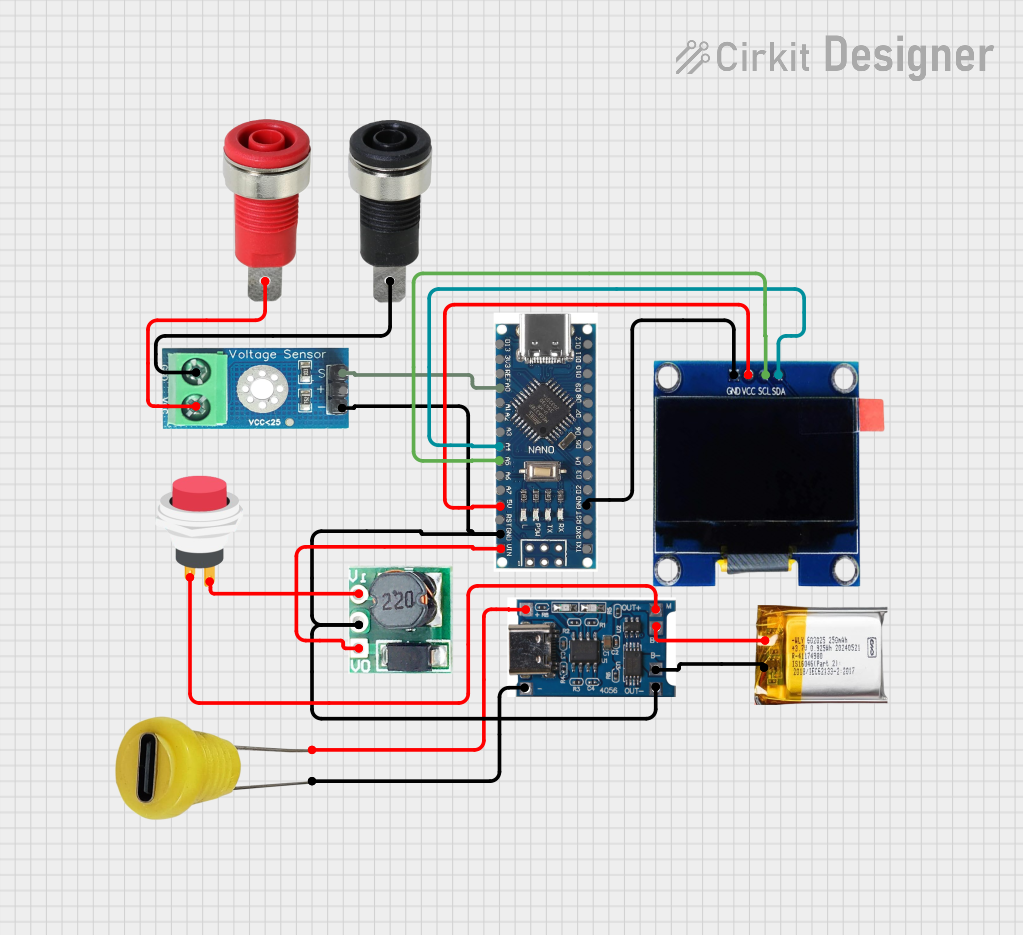
How to Use Mtiny Uno ATmega328P: Examples, Pinouts, and Specs
 Design with Mtiny Uno ATmega328P in Cirkit Designer
Design with Mtiny Uno ATmega328P in Cirkit DesignerIntroduction
The MTiny Uno ATmega328P is a compact microcontroller board designed by Makerlabvn, based on the popular ATmega328P processor. It retains the functionality of the standard Arduino Uno while offering a smaller form factor, making it ideal for space-constrained projects. The MTiny Uno is fully compatible with the Arduino IDE, allowing for easy programming and integration into a wide range of applications, from simple DIY projects to complex electronic systems.
Explore Projects Built with Mtiny Uno ATmega328P

 Open Project in Cirkit Designer
Open Project in Cirkit Designer
 Open Project in Cirkit Designer
Open Project in Cirkit Designer
 Open Project in Cirkit Designer
Open Project in Cirkit Designer
 Open Project in Cirkit Designer
Open Project in Cirkit DesignerExplore Projects Built with Mtiny Uno ATmega328P

 Open Project in Cirkit Designer
Open Project in Cirkit Designer
 Open Project in Cirkit Designer
Open Project in Cirkit Designer
 Open Project in Cirkit Designer
Open Project in Cirkit Designer
 Open Project in Cirkit Designer
Open Project in Cirkit DesignerCommon Applications and Use Cases
- Educational purposes and workshops
- Prototyping IoT devices
- Wearable electronics
- Robotics
- Hobbyist projects
Technical Specifications
Key Technical Details
- Microcontroller: ATmega328P
- Operating Voltage: 5V
- Input Voltage (recommended): 7-12V
- Input Voltage (limits): 6-20V
- Digital I/O Pins: 14 (of which 6 provide PWM output)
- Analog Input Pins: 6
- DC Current per I/O Pin: 40 mA
- DC Current for 3.3V Pin: 50 mA
- Flash Memory: 32 KB (ATmega328P) of which 0.5 KB used by bootloader
- SRAM: 2 KB (ATmega328P)
- EEPROM: 1 KB (ATmega328P)
- Clock Speed: 16 MHz
- LED_BUILTIN: Pin 13
Pin Configuration and Descriptions
| Pin Number | Function | Description |
|---|---|---|
| 1 | RESET | Used to reset the microcontroller |
| 2-13 | Digital I/O | Digital input/output pins |
| 14-19 | Analog Input | Analog input pins |
| 20, 21 | I2C | SDA and SCL for I2C communication |
| 22, 23 | TX/RX | Serial communication pins |
| 24 | 3V3 | 3.3V power output (50 mA max) |
| 25 | 5V | 5V power output from regulator |
| 26 | GND | Ground pin |
| 27 | AREF | Analog reference voltage for ADC |
| 28 | VIN | Input voltage to the board |
Usage Instructions
How to Use the Component in a Circuit
Powering the Board:
- Connect a 7-12V power supply to the VIN pin for optimal operation.
- Alternatively, you can power the board via the USB connection.
Programming the Board:
- Connect the MTiny Uno to a computer using a USB cable.
- Select "Arduino Uno" as the board type in the Arduino IDE.
- Choose the correct COM port for the MTiny Uno.
- Write or open your sketch and upload it to the board.
Connecting I/O Devices:
- Use the digital and analog pins to connect sensors, actuators, and other peripherals.
- Ensure that connected devices are compatible with the voltage and current specifications of the pins.
Important Considerations and Best Practices
- Always disconnect the power source before making or altering connections.
- Do not exceed the recommended voltage and current limits to prevent damage.
- Use a current-limiting resistor with LEDs and other sensitive components.
- Utilize the onboard LED connected to pin 13 for testing and debugging.
- When using PWM outputs, ensure the connected devices are PWM compatible.
Troubleshooting and FAQs
Common Issues Users Might Face
Board not recognized by the computer:
- Check the USB cable and connections.
- Ensure the correct drivers are installed.
Sketch not uploading:
- Verify the correct board and port are selected in the Arduino IDE.
- Check for errors in the code and ensure the correct bootloader is used.
Unexpected behavior in circuits:
- Double-check wiring and connections.
- Ensure power supply is stable and within the specified range.
Solutions and Tips for Troubleshooting
- Use the Arduino IDE's Serial Monitor to debug and print out messages from the board.
- Isolate the problem by testing components individually.
- Consult the Makerlabvn forums or Arduino community for support.
Example Code for Arduino UNO
// Blink an LED connected to pin 13
void setup() {
pinMode(13, OUTPUT); // Initialize pin 13 as an output
}
void loop() {
digitalWrite(13, HIGH); // Turn the LED on
delay(1000); // Wait for a second
digitalWrite(13, LOW); // Turn the LED off
delay(1000); // Wait for a second
}
Note: The above code uses the built-in LED on pin 13. If an external LED is used, ensure it is connected with a suitable current-limiting resistor.
For further assistance or inquiries, please contact Makerlabvn support or refer to the community forums.